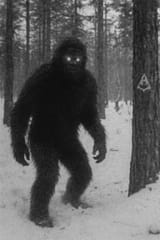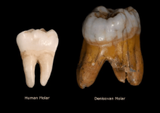Anonymous
6/16/2025, 11:07:48 PM No.40544272
>Dyatlov Pass Incident
>The Dyatlov Pass incident was an event in which nine Soviet hikers died in the northern Ural Mountains between February 1 and 2, 1959, in uncertain circumstances. The experienced trekking group from the Ural Polytechnical Institute, led by Igor Dyatlov, had established a camp on the eastern slopes of Kholat Syakhl in the Russian SFSR of the Soviet Union. Overnight, something caused them to cut their way out of their tent and flee the campsite while inadequately dressed for the heavy snowfall and sub-zero temperatures.
>After the group's bodies were discovered, an investigation by Soviet authorities determined that six of them had died from hypothermia while the other three had been killed by physical trauma. One victim had major skull damage, two had severe chest trauma, and another had a small crack in his skull. Four of the bodies were found lying in running water in a creek, and three of these four had damaged soft tissue of the head and face – two of the bodies had missing eyes, one had a missing tongue, and one had missing eyebrows. The investigation concluded that a "compelling natural force" had caused the deaths. Numerous theories have been put forward to account for the unexplained deaths, including animal attacks, hypothermia, an avalanche, katabatic winds, infrasound-induced panic, military involvement, or some combination of these factors.
Why does it still bring such mystery and uncertainty
>The Dyatlov Pass incident was an event in which nine Soviet hikers died in the northern Ural Mountains between February 1 and 2, 1959, in uncertain circumstances. The experienced trekking group from the Ural Polytechnical Institute, led by Igor Dyatlov, had established a camp on the eastern slopes of Kholat Syakhl in the Russian SFSR of the Soviet Union. Overnight, something caused them to cut their way out of their tent and flee the campsite while inadequately dressed for the heavy snowfall and sub-zero temperatures.
>After the group's bodies were discovered, an investigation by Soviet authorities determined that six of them had died from hypothermia while the other three had been killed by physical trauma. One victim had major skull damage, two had severe chest trauma, and another had a small crack in his skull. Four of the bodies were found lying in running water in a creek, and three of these four had damaged soft tissue of the head and face – two of the bodies had missing eyes, one had a missing tongue, and one had missing eyebrows. The investigation concluded that a "compelling natural force" had caused the deaths. Numerous theories have been put forward to account for the unexplained deaths, including animal attacks, hypothermia, an avalanche, katabatic winds, infrasound-induced panic, military involvement, or some combination of these factors.
Why does it still bring such mystery and uncertainty
Replies:



